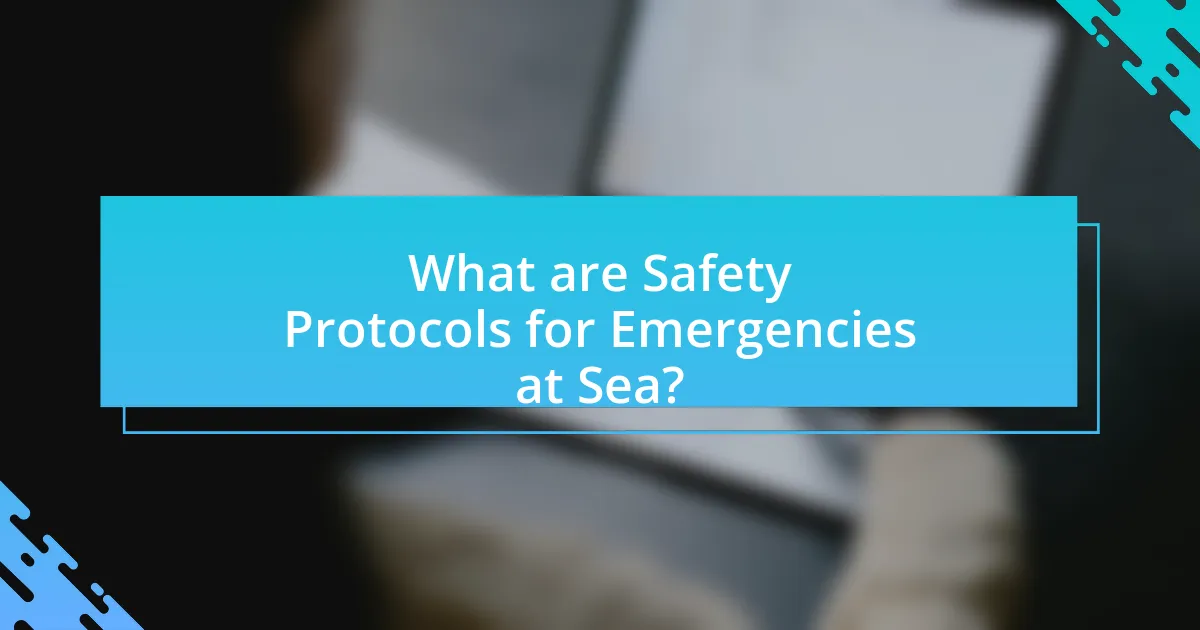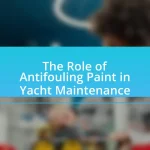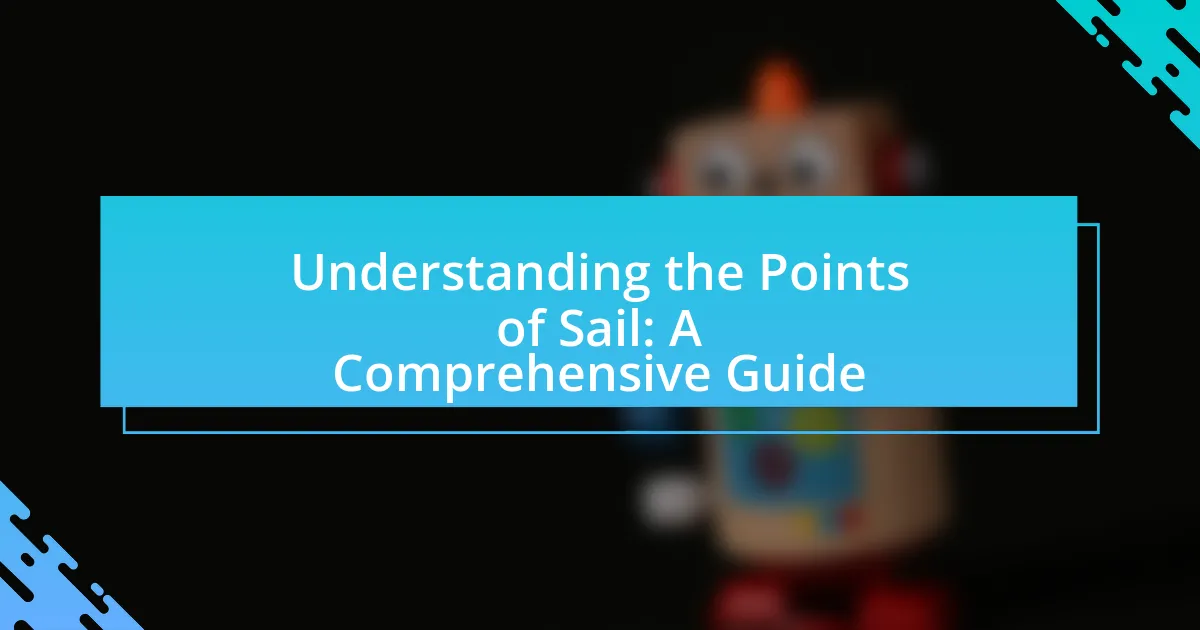Safety protocols for emergencies at sea are critical procedures designed to protect individuals on board vessels during crises. This article outlines the importance of these protocols, which include regular safety drills, accessible life-saving equipment, and effective communication systems. It discusses the potential risks at sea, such as severe weather and equipment failure, and emphasizes the necessity of comprehensive training for crew members. Key components of safety protocols, relevant regulations, and best practices for emergency response are also examined, highlighting how adherence to these measures can significantly reduce maritime accidents and enhance overall safety.

What are Safety Protocols for Emergencies at Sea?
Safety protocols for emergencies at sea include a series of established procedures designed to ensure the safety of individuals on board vessels during critical situations. These protocols typically involve conducting regular safety drills, maintaining accessible life-saving equipment such as life jackets and lifeboats, and ensuring clear communication channels for distress signals. For instance, the International Maritime Organization mandates that vessels must have a safety management system in place, which includes training crew members in emergency response and evacuation procedures. Additionally, adherence to the Global Maritime Distress and Safety System (GMDSS) ensures that ships can communicate emergencies effectively, enhancing the chances of timely rescue.
Why are Safety Protocols Essential for Maritime Operations?
Safety protocols are essential for maritime operations because they significantly reduce the risk of accidents and enhance the safety of crew and vessels. These protocols establish clear guidelines for emergency situations, ensuring that all personnel are trained to respond effectively to incidents such as fires, man overboard scenarios, or equipment failures. According to the International Maritime Organization, adherence to safety protocols has been shown to decrease maritime accidents by up to 30%, highlighting their critical role in safeguarding lives and property at sea.
What are the potential risks and emergencies at sea?
The potential risks and emergencies at sea include severe weather conditions, equipment failure, man overboard situations, collisions, grounding, fire, and medical emergencies. Severe weather can lead to dangerous waves and storms, impacting vessel stability and safety. Equipment failure, such as engine breakdowns or navigation system malfunctions, can leave a vessel stranded or off course. Man overboard incidents require immediate action to rescue the individual, as time is critical. Collisions with other vessels or obstacles can cause significant damage and pose risks to crew and passengers. Grounding occurs when a vessel runs aground, potentially leading to hull damage and environmental hazards. Fires onboard can escalate quickly, necessitating effective fire suppression measures. Medical emergencies, such as heart attacks or injuries, require prompt medical attention, often complicated by the remote location of the incident. Each of these risks necessitates comprehensive safety protocols and preparedness measures to mitigate their impact.
How do safety protocols mitigate these risks?
Safety protocols mitigate risks at sea by establishing structured guidelines that enhance preparedness and response during emergencies. These protocols include regular safety drills, equipment checks, and clear communication procedures, which collectively reduce the likelihood of accidents and improve reaction times in critical situations. For instance, the International Maritime Organization mandates safety drills for crew members, ensuring they are trained to handle emergencies effectively, which has been shown to significantly decrease incident rates in maritime operations.
What are the Key Components of Safety Protocols?
The key components of safety protocols include risk assessment, emergency response plans, training and drills, communication procedures, and equipment maintenance. Risk assessment identifies potential hazards and evaluates their impact, ensuring preparedness for emergencies. Emergency response plans outline specific actions to take during incidents, detailing roles and responsibilities. Training and drills ensure that personnel are familiar with protocols and can respond effectively under pressure. Communication procedures facilitate clear and timely information exchange among crew members and emergency services. Equipment maintenance ensures that safety gear and systems are functional and reliable, reducing the likelihood of failure during emergencies. These components collectively enhance safety and preparedness in maritime environments.
What types of safety equipment are necessary on board?
Necessary safety equipment on board includes life jackets, fire extinguishers, first aid kits, distress signals, and lifeboats. Life jackets are essential for ensuring individual buoyancy in emergencies, while fire extinguishers are critical for combating onboard fires. First aid kits provide immediate medical assistance, and distress signals, such as flares or EPIRBs, are vital for alerting rescuers. Lifeboats serve as a means of evacuation in case of severe emergencies. These items are mandated by maritime safety regulations to enhance survival chances during maritime incidents.
How should crew members be trained in safety protocols?
Crew members should be trained in safety protocols through a structured program that includes theoretical knowledge, practical drills, and regular assessments. This training should cover emergency procedures, use of safety equipment, and first aid techniques, ensuring that crew members are well-prepared for various scenarios. According to the International Maritime Organization (IMO), effective training enhances crew readiness and reduces the risk of accidents at sea, as evidenced by improved safety records in vessels that implement comprehensive training programs.
What Regulations Govern Safety Protocols at Sea?
The regulations that govern safety protocols at sea primarily include the International Convention for the Safety of Life at Sea (SOLAS), the International Maritime Organization (IMO) guidelines, and national maritime laws. SOLAS, established in 1974, sets minimum safety standards for ships, including construction, equipment, and operation, ensuring the safety of life at sea. The IMO provides a framework for maritime safety, promoting best practices and compliance among member states. National laws further enforce these international standards, adapting them to specific regional needs and conditions. These regulations collectively aim to enhance maritime safety and protect lives at sea.
What international standards exist for maritime safety?
International standards for maritime safety include the International Convention for the Safety of Life at Sea (SOLAS), the International Maritime Organization (IMO) guidelines, and the International Convention on Standards of Training, Certification and Watchkeeping for Seafarers (STCW). SOLAS, established in 1974, sets minimum safety standards for ships, including construction, equipment, and operation. The IMO provides a framework for maritime safety regulations and promotes safe shipping practices globally. STCW, adopted in 1978, ensures that seafarers are properly trained and certified, enhancing safety at sea. These standards are critical for reducing maritime accidents and improving overall safety in international waters.
How do national regulations impact safety protocols?
National regulations significantly shape safety protocols by establishing mandatory standards and guidelines that organizations must follow to ensure the safety of personnel and equipment. For instance, the International Maritime Organization (IMO) sets regulations that require vessels to implement safety management systems, conduct regular drills, and maintain safety equipment, which directly influences how maritime operators prepare for emergencies at sea. Compliance with these regulations not only enhances safety but also reduces the risk of accidents, as evidenced by a decrease in maritime incidents in regions with stringent regulatory frameworks.
How Can Crew Prepare for Emergencies at Sea?
Crew can prepare for emergencies at sea by conducting regular safety drills, ensuring all members are familiar with emergency procedures, and maintaining equipment. Regular safety drills, such as man-overboard and fire drills, enhance crew readiness and response times during actual emergencies. Familiarity with emergency procedures, including evacuation routes and communication protocols, is crucial for effective action. Additionally, maintaining safety equipment, such as life rafts, fire extinguishers, and first aid kits, ensures they are operational when needed. According to the International Maritime Organization, adherence to safety protocols significantly reduces the risk of accidents and improves survival rates in maritime emergencies.
What are the Steps for Conducting Safety Drills?
The steps for conducting safety drills include planning, training, execution, and evaluation. First, planning involves identifying the type of emergency scenario to simulate, such as fire or man overboard, and determining the objectives of the drill. Next, training ensures that all participants understand their roles and responsibilities during the drill, which can include reviewing safety procedures and equipment usage. Execution involves carrying out the drill as realistically as possible, ensuring that all personnel participate and follow the established protocols. Finally, evaluation consists of reviewing the drill’s effectiveness, gathering feedback from participants, and identifying areas for improvement to enhance future drills. These steps are essential for ensuring preparedness and safety in emergency situations at sea.
How often should safety drills be conducted?
Safety drills should be conducted at least once every three months. This frequency is recommended by the International Maritime Organization (IMO) to ensure that crew members remain familiar with emergency procedures and can respond effectively in real situations. Regular drills help reinforce training, improve coordination among crew members, and enhance overall safety preparedness on board vessels.
What scenarios should be included in safety drills?
Safety drills should include scenarios such as man overboard, fire on board, flooding, engine failure, and medical emergencies. These scenarios are critical as they represent common emergencies that can occur at sea, requiring immediate and effective responses. For instance, the man overboard scenario trains crew members on retrieval techniques and communication protocols, while fire drills prepare them for evacuation and firefighting procedures. According to the International Maritime Organization, regular drills enhance crew preparedness and safety, significantly reducing response times during actual emergencies.
What are the Best Practices for Emergency Response at Sea?
The best practices for emergency response at sea include having a well-defined emergency plan, conducting regular drills, ensuring effective communication, and maintaining safety equipment. A well-defined emergency plan outlines specific procedures for various scenarios, such as man overboard or fire, ensuring crew members know their roles. Regular drills, conducted at least twice a year, enhance crew readiness and familiarize them with emergency protocols, as recommended by the International Maritime Organization. Effective communication is crucial; using standardized phrases and maintaining clear channels can significantly reduce confusion during emergencies. Additionally, maintaining safety equipment, such as life rafts, fire extinguishers, and first aid kits, ensures they are operational and accessible, as per safety regulations. These practices collectively enhance the safety and preparedness of maritime operations.
How should communication be handled during an emergency?
Communication during an emergency should be clear, concise, and timely to ensure effective coordination and response. Establishing a designated communication channel, such as a marine radio or emergency signaling devices, is crucial for relaying information quickly. According to the International Maritime Organization, effective communication can significantly reduce response times and improve safety outcomes during maritime emergencies. Regular drills and training on communication protocols enhance preparedness and ensure that all crew members understand their roles in relaying critical information.
What roles do crew members play in emergency situations?
Crew members play critical roles in emergency situations by executing safety protocols, ensuring passenger safety, and managing crisis response. Each crew member is trained to perform specific tasks such as directing evacuations, operating emergency equipment, and providing first aid. For instance, during a fire, crew members are responsible for activating alarms, guiding passengers to exits, and using fire extinguishers. The International Maritime Organization mandates that crew members undergo regular safety drills to maintain readiness, which reinforces their ability to respond effectively in real emergencies. This structured training and defined roles are essential for minimizing risks and ensuring the safety of all on board.
What Resources are Available for Improving Safety Protocols?
Resources available for improving safety protocols include training programs, regulatory guidelines, and technological tools. Training programs, such as those offered by the International Maritime Organization (IMO), provide essential knowledge on emergency procedures and safety measures. Regulatory guidelines, including the Safety of Life at Sea (SOLAS) convention, establish mandatory safety standards for vessels. Technological tools, such as automated safety systems and real-time monitoring equipment, enhance situational awareness and response capabilities during emergencies. These resources collectively contribute to a more robust safety framework for maritime operations.
What training programs are recommended for maritime safety?
Recommended training programs for maritime safety include the STCW (Standards of Training, Certification, and Watchkeeping for Seafarers) courses, which are internationally recognized and cover essential safety skills. These programs provide training in firefighting, survival techniques, first aid, and emergency response procedures. Additionally, the International Maritime Organization (IMO) offers various safety training courses that focus on specific maritime safety protocols, such as the GMDSS (Global Maritime Distress and Safety System) training, which is crucial for communication during emergencies. These training programs are validated by maritime authorities and are essential for ensuring the safety of personnel at sea.
How can technology enhance safety protocols at sea?
Technology can enhance safety protocols at sea by integrating advanced communication systems, real-time monitoring, and automated navigation tools. These technologies enable vessels to maintain constant communication with shore-based operations, allowing for immediate reporting of emergencies and swift coordination of rescue efforts. For instance, the Global Maritime Distress and Safety System (GMDSS) ensures that ships can send distress signals and receive assistance quickly, significantly reducing response times during emergencies. Additionally, the use of satellite tracking and AIS (Automatic Identification System) provides real-time location data, helping to prevent collisions and improve situational awareness. According to the International Maritime Organization, the implementation of such technologies has led to a measurable decrease in maritime accidents, demonstrating their effectiveness in enhancing safety protocols at sea.
What Practical Tips Can Enhance Safety Protocols at Sea?
Implementing regular safety drills enhances safety protocols at sea by ensuring crew members are familiar with emergency procedures. Regular training sessions, such as man-overboard drills and fire response exercises, improve crew readiness and response times during actual emergencies. According to the International Maritime Organization, vessels that conduct frequent safety drills significantly reduce the likelihood of accidents and improve overall safety outcomes. Additionally, maintaining up-to-date safety equipment, such as life jackets and emergency beacons, is crucial, as equipment failure can lead to dire consequences in emergencies. Regular inspections and maintenance of safety gear ensure that it functions correctly when needed.

















